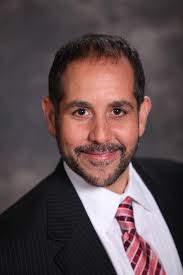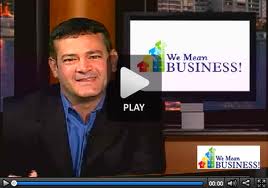3 Ways to Create Ownership (not “Buy-in”)
I recently posted a daily quick tip including the timeless phrase, “It’s hard to be a prophet in your own land.” I was referring to the inherent challenges of sharing your world-class customer experience vision with your staff, in such a way that they might make it their own. As a result of that blog post, Jennifer asked the following question:
Jennifer says:
“I am the Trainer in the corporate office at my company. I have heard many comments relating to the notion that “how can you train us…you don’t do the job.” When I have actually ‘done the job’ for years before I became the Trainer. Also, I have heard comments such as “what makes you the expert?” I suppose these are all well and valid points, but how do you get that ‘buy in?’ I work for a busy call center, and train everyone from new hires to veteran employees, on new processes, to refresher classes. Some people think they are doing a great job, when in fact their “exceptional” is not the equivalent of my/the company’s definition of “exceptional.” I welcome your thoughts… Thank you.”
What’s beneath the surface?
It seems Jennifer is facing a challenge that many leaders and corporate trainers encounter. Not only is she tasked with trying to “be a prophet in her own land,” but her well-intentioned approach has her struggling to garner the attention – and perhaps even the respect – of her team.
It’s not her fault
Chances are good that Jennifer was so proficient at her previous call-center job that someone thought, “She should be teaching everyone else how to be just like her.” I see this kind of thing happen all the time.
When I was in sales, for example, I’d see top salespeople get promoted to sales managers. More often than not, this doesn’t end well. You may have a “rock star” employee on the front line, but that doesn’t guarantee they’ll make a great manager/leader or effective trainer. “Doing” and “teaching” are two different things, entirely.
Often, what makes that front-line person exceptional is an innate ability to deliver remarkable service and ultimately WOW customers and clients. Innate abilities are generally unconscious – something that person isn’t even aware she’s doing. And if it isn’t part of her own self-awareness, how can we ever expect her to teach it to anyone else?
But there’s an even bigger challenge …
Notice that in Jennifer’s message (above), she mentions trying to get “buy-in.” I’m here to declare that this approach toward buy-in doesn’t work. Simply put, your employees don’t come to work hoping to be “sold to.” You shouldn’t have to convince them of anything.
So what can you do?
Here are 3 tips you can use to improve your own results
- Employees should NOT see you as having all the answers – do you really want to create that kind of dependency? It’s OK to let your staff discover all — or at least most — of the answers…
- Your job is to be a masterful facilitator. Get employees to engage in critical thinking exercises. People will support what they help to create. The remedy, therefore, is a training style with a high level of interaction; facilitated conversations.
- Learn to ask powerful questions of your staff. Not only will you get their “customer experience wheels” turning, you’ll likely be surprised at the stories they share and the rich ideas they generate as a result.
PRO TIP: when someone offers an idea that lacks value and is clearly way off track, you don’t want to embarrass them, alienate them, or leave them feeling disregarded — they’ll shut down, check out, and even bring others down with them. Instead, respond by saying, “Thank you for sharing that. You may be pointing to something. What other thoughts do we have from the group?”
Bottom Line
When the ideas belong to them, you’ve created ownership — and ownership outperforms buy-in … every time.
By the way, I had the honor of interviewing Robert Richman on my TV show recently. Robert is known as a “Culture Architect” and he’s the former insights manager for Zappos.com. Here he is, talking briefly about “the end of buy-in” (you can jump to minute marker 21:40)



















Interesting issue. Facilitation, not knowing all the answers, and asking powerful questions are absolutely important. But so is an icebreaker that allows you 30 – 60 seconds per participant in groups at 20 and below, in programs that are at least a half day long. There, you listen, question, and bond with the group. You establish a personal connection with each person, and follow it with your two minute, well prepared story of how you arrived to the postion you possess. Do that, proceed with confidence, and don’t even think about it again. They won’t either.
Agreed, Rob. A master facilitator has the unique ability to include all 20 people in such a way that everyone feels safe and everyone has a voice. C-level execs often watch this in awe and later wonder how/why there were no “wall flowers.” Your icebreaker sounds like a great fit, especially for a group this size.
From viewing some of your site’s videos, you are clearly one of these masterful facilitators/speakers. And congrats on your newest book!